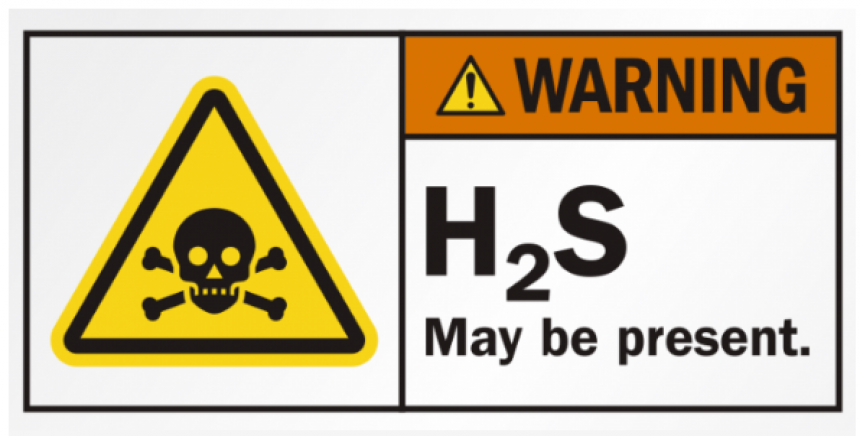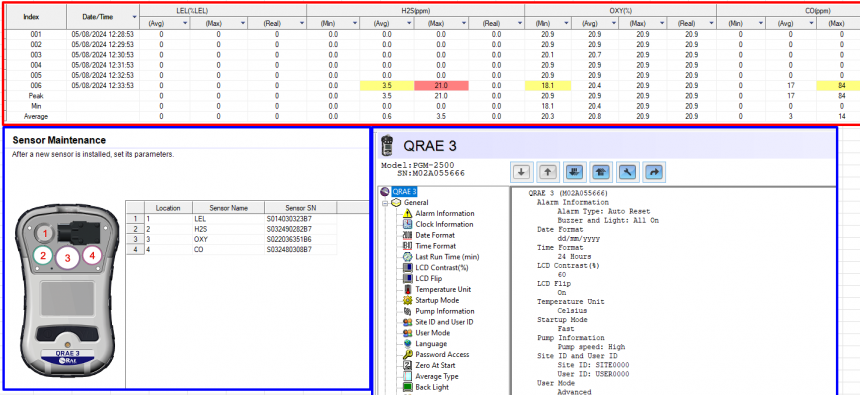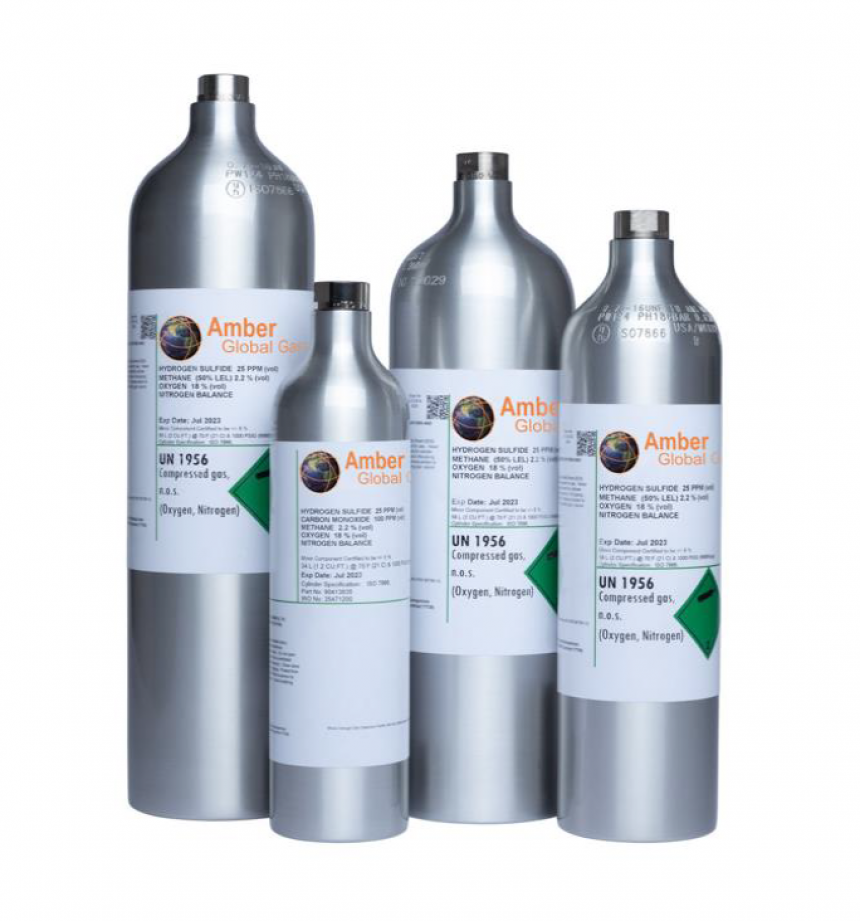
| By Administrator
Info Gas: H2S (Hidrogen Sulfida, Hydrogen Sulfide)
Hydrogen Sulfide (H2S) Hydrogen Sulfide is a colorless, flammable, extremely hazardous gas with a “rotten egg” smell. Some common names for the gas include sewer gas, stink damp, swamp gas and manure gas. It occurs naturally in crude petroleum, natural gas, and hot springs. In addition, hydrogen sulfide is produced by bacterial breakdown of organic materials and human and animal wastes (e.g., sewage). Industrial activities that can produce the gas include petroleum/natural gas drilling and refining, wastewater treatment, coke ovens, tanneries, and kraft paper mills. Hydrogen sulfide can also exist as a liquid compressed gas. Properties: Hydrogen sulfide is heavier than air and may travel along the ground. It collects in low-lying and enclosed, poorly-ventilated areas such as basements, manholes, sewer lines, underground telephone vaults and manure pits. For work within confined spaces, use appropriate procedures for identifying hazards, monitoring and entering confined spaces. The primary route of exposure is inhalation and the gas is rapidly absorbed by the lungs. Absorption through the skin is minimal. People can smell the “rotten egg” odor of hydrogen sulfide at low concentrations in air. However, with continuous low-level exposure, or at high concentrations, a person loses his/her ability to smell the gas even though it is still present (olfactory fatigue). This can happen very rapidly and at high concentrations, the ability to smell the gas can be lost instantaneously. Therefore, DO NOT rely on your sense of smell to indicate the continuing presence of hydrogen sulfide or to warn of hazardous concentrations. In addition, hydrogen sulfide is a highly flammable gas and gas/air mixtures can be explosive. It may travel to sources of ignition and flash back. If ignited, the gas burns to produce toxic vapors and gases, such as sulfur dioxide. Contact with liquid hydrogen sulfide causes frostbite. If clothing becomes wet with the liquid, avoid ignition sources, remove the clothing and isolate it in a safe area to allow the liquid to evaporate. Health effect: Hydrogen sulfide is both an irritant and a chemical asphyxiant with effects on both oxygen utilization and the central nervous system. Its health effects can vary depending on the level and duration of exposure. Repeated exposure can result in health effects occurring at levels that were previously tolerated without any effect. Low concentrations irritate the eyes, nose, throat and respiratory system (e.g., burning/ tearing of eyes, cough, shortness of breath). Asthmatics may experience breathing difficulties. The effects can be delayed for several hours, or sometimes several days, when working in low-level concentrations. Repeated or prolonged exposures may cause eye inflammation, headache, fatigue, irritability, insomnia, digestive disturbances and weight loss. Moderate concentrations can cause more severe eye and respiratory irritation (including coughing, difficulty breathing, accumulation of fluid in the lungs), headache, dizziness, nausea, vomiting, staggering and excitability. High concentrations can cause shock, convulsions, inability to breathe, extremely rapid unconsciousness, coma and death. Effects can occur within a few breaths, and possibly a single breath. Protection: Before entering areas where Hydrogen Sulfide may be present: 1. Air must be tested for the presence and concentration of hydrogen sulfide by a qualified person using air monitoring equipment, such as hydrogen sulfide detector tubes or a multi-gas meter that detects the gas. Testing should also determine if fire/explosion precautions are necessary. 2. If the gas is present, the space/area must be ventilated continually to remove the gas. 3. If the gas cannot be removed, the person entering the space/area must use appropriate respiratory protection and any other necessary personal protective equipment, rescue and communication equipment. OSHA’s Confined Spaces standard contains specific requirements for identifying, monitoring and entering confined spaces. Entering dangerous H2S atmospheres: A level of H2S gas at or above 100 ppm is Immediately Dangerous to Life and Health (IDLH). Entry into IDLH atmospheres can only be made using: 1) a full facepiece pressure demand self-contained breathing apparatus (SCBA) with a minimum service life of thirty minutes, or 2) a combination full facepiece pressure demand supplied-air respirator with an auxiliary self-contained air supply. If H2S levels are below 100 ppm, an air-purifying respirator may be used, assuming the filter cartridge/canister is appropriate for hydrogen sulfide. A full facepiece respirator will prevent eye irritation. If air concentrations are elevated, eye irritation may become a serious issue. If a half mask respirator is used, tight fitting goggles must also be used. Workers in areas containing hydrogen sulfide must be monitored for signs of overexposure. !!NEVER attempt a rescue in an area that may contain hydrogen sulfide without using appropriate respiratory protection and without being trained to perform such a rescue. This information sourced from OSHA H2S Fact Sheet
READ MORE

